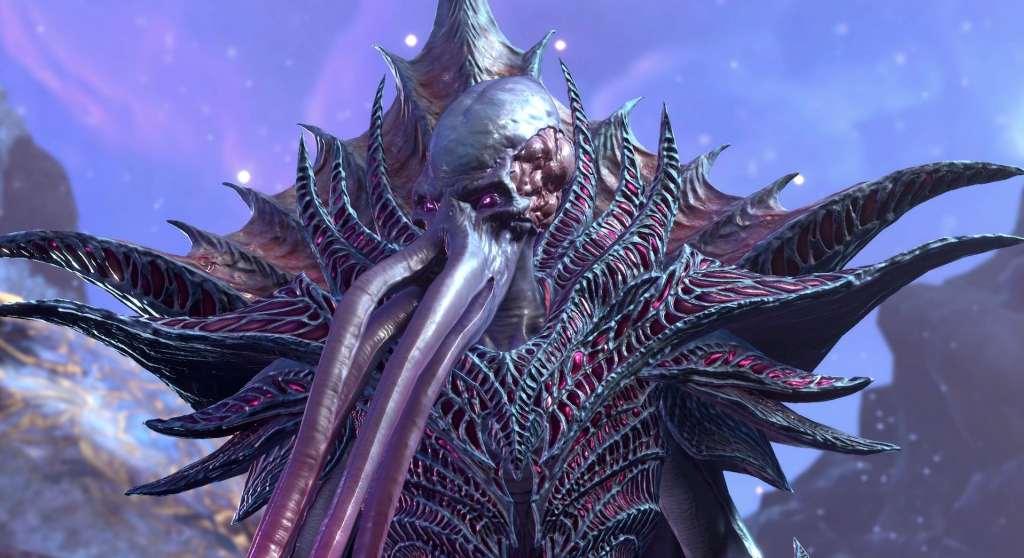My friends and I are playing Baldur’s Gate 3. Trading tips back and forth. Discussing spiders and brain worms, and the terrors of the Underdark. But we are not playing the same game. One of us is a Warlock with Eldritch patrons and high persuasion, avoiding major battles with a silver tongue. One of us is playing a dating sim, searching desperately for Infernal Iron to buoy a romance with Tiefling Barbarian companion, Karlach. One of us has never met Karlach – and deeply regrets it.
Conversations have been baffling in that regard.
“Have you found the spider den in the Goblin camp?”
“There’s a spider den?
“Where did you find Infernal Iron to save Karlach?”
“……. Who is Karlach?”
We’ve been running in loops as solo players, seemingly conquering four different games – and that’s the beauty of Baldur’s Gate 3. It’s a shape-shifting entity hiding multitudes. Ahead of the game’s launch, developer Larian Studios proudly announced there were 17,000 possible endings to the game. At the time, it seemed outlandish. But with every new choice made, I drew closer to understanding.
Baldur’s Gate 3 unfolds within set bounds – it must, by nature. But it’s far from linear, and even a foot wrong can crack open out a wild, branching pathway that locks off plot lines and character beats. There’s a finality to making a choice in the game, in that you can’t possibly experience everything it has to offer. Making even a minor choice may have scattering consequences. An NPC can disappear on a whim. If you have a Long Rest one too many times, a plot will advance without you. It’s paralysing in a sense, but freeing in another.
Read: Baldur’s Gate 3 Guide: Tips and Early Game Advice for Beginners
The choice and chance-based system invites experimentation, and blankets you with the knowledge that you can always take another path, in another playthrough. No two games are the same. It’s a rare achievement in the RPG genre, that Baldur’s Gate 3 evokes such ideas of freedom. That there is no firm path ahead, and that plots can intertwine with such a neat precision. That you can discuss your choices with friends, and realise you’re all on parallel paths that may never meet.
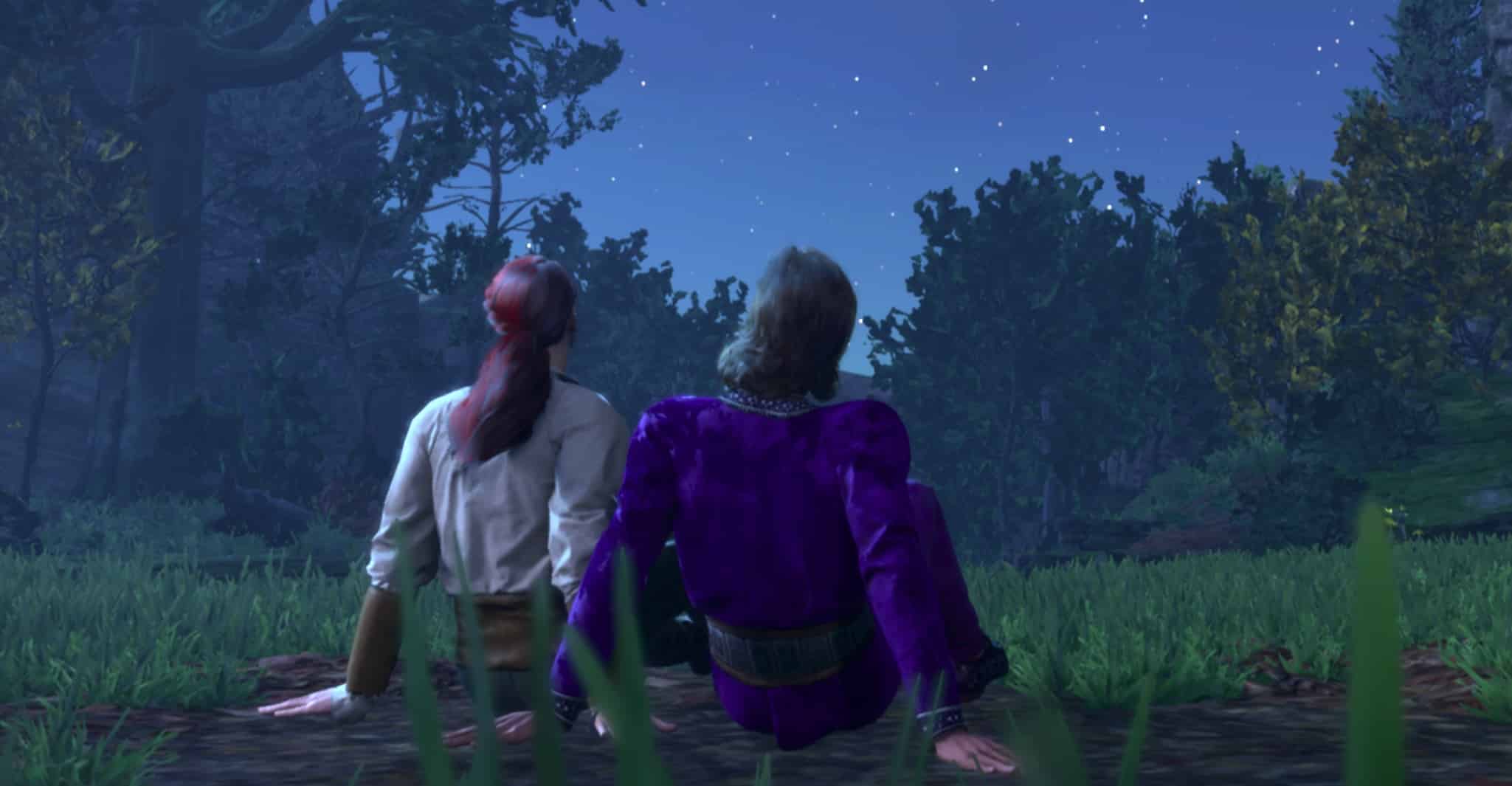
As my Sorcerer journeyed through each of the game’s distinct acts, they made friends with Goblins, fell in love with a secretive vampire, accidentally tried to steal shoes and wound up fighting off a colony of mushroom beings. They exploded a trapped adventurer with deadly plants (and saved him on a reload), figured out the jump mechanic far too late in the first act, and had to kill one of their rogue party members in a harrowing gauntlet. They made best friends with a dog, embraced brain worms, and defeated countless hordes of spiders.
They lost an eye to a distinctly untrustworthy physician.
Their fate was their own.
It’s a rare feeling, to have such a personal connection with an adventure, and to feel your choices moulded your own journey. But it’s that connection that buoys Baldur’s Gate 3 through multiple acts, even as combat gets tough, and plot threads dangle.
The road to Baldur’s Gate
Baldur’s Gate 3 makes an impression from its opening, which begins on a slimy, oozing craft filled with bloody tendrils and gaping corridors. It’s a beautiful, horrifying sight with glistening walls and fleshy, hideous structures painting a picture of horror. Your plight as a wandering hero infected by an Illithid brain worm feels immediate, pressing. You run through corridors, freeing whoever you can find, hoping there’s escape.
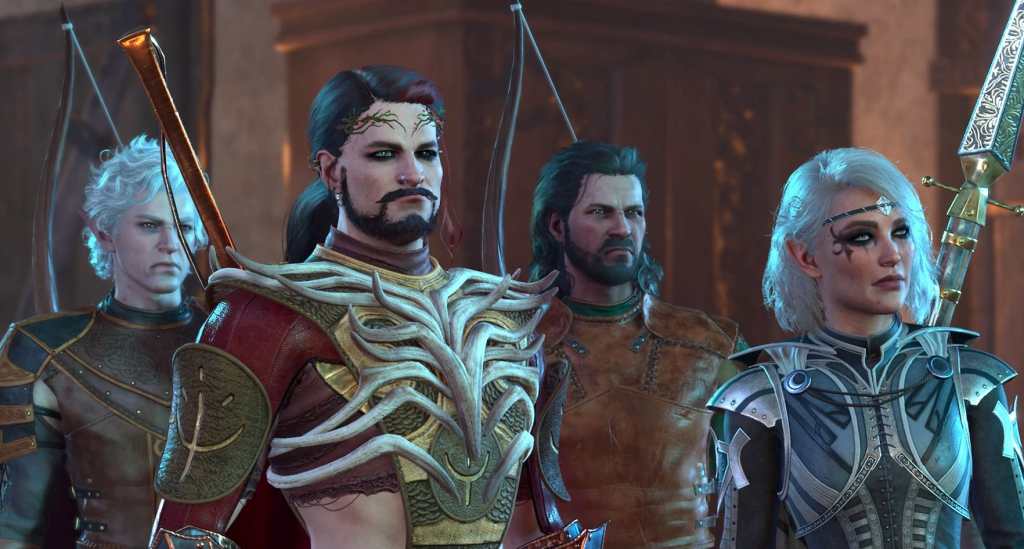
And when the craft is downed and you find yourself on land, the threat of your brain worm encourages an urgency that ultimately clashes with the purpose of your journey. Pacing is a tough nut for Baldur’s Gate 3 to crack, and it does feel stilted, at first. You are told of your imminent transformation into a terrifying Mind Flayer, and are then allowed to wander freely, with hours spent in campsites, conversing with strangers, picking up quests, and fighting enemies.
Eventually, this is revealed as a red herring, with the true nature of your brain worm unfolding over time – and new plot threads eventually spilling out into the main story, buffing its slimmer edges. While this stretches the plot – goals are usually hiding behind other goals, and you’ll need to traipse through a rigamarole of minor quests to move forward – Baldur’s Gate 3 manages to avoid feeling overlong, thanks to a robust and enjoyable combat system, and its choice-driven pathways.
You don’t have to jump head-on into major, multi-enemy battles. Sometimes, you can Misty Step your way through danger, or remain hidden to strike at the opportune time. Sometimes, you don’t even need to fight. This sense of freedom adds twists to the main action – while also allowing a much-needed sense of hope and possibility.
Baldur’s Gate 3 can be an incredibly difficult game. Combat, as in past Larian games like Divinity: Original Sin, plays out in turns, where high-powered enemies move across the battlefield and deploy clever plays when you least expect them. The game’s AI is very sharp, and won’t be fooled by trickery, like attempting to hide in plain sight. That means careful planning, biding your time for high-powered moves, and ensuring you’re always capable of healing.
Chance comes into play here in a major way – and it can be a massive boon or a major pain, depending on the outcome of your attacks. You may position yourself well, with advantage and a high-powered attack, then an enemy may save themselves with a dice roll, or your attack may suddenly fail. Conversely, you might also get a critical hit, and put down an enemy with a phenomenally high-powered attack. Between saves (and you can certainly reload a save when you fail, no shame in that) an entirely different battle may unfold.
That’s where the hope comes in. Even when a battle seems dire, the element of chance means there’s always a possibility that something might go your way. You may sneak in an extra attack, or stay alive when an enemy attack somehow deals less damage. You may save your party, or the entire battle. With that element of surprise comes triumph. While it’s certainly satisfying winning a long round of combat with careful planning, there’s nothing quite like the serotonin of snatching impossible victory, thanks to a chance roll – or squirming your way through a high-levelled battle.
Chance is a magical tool, and it adds a sense of giddy spontaneity to these battles.
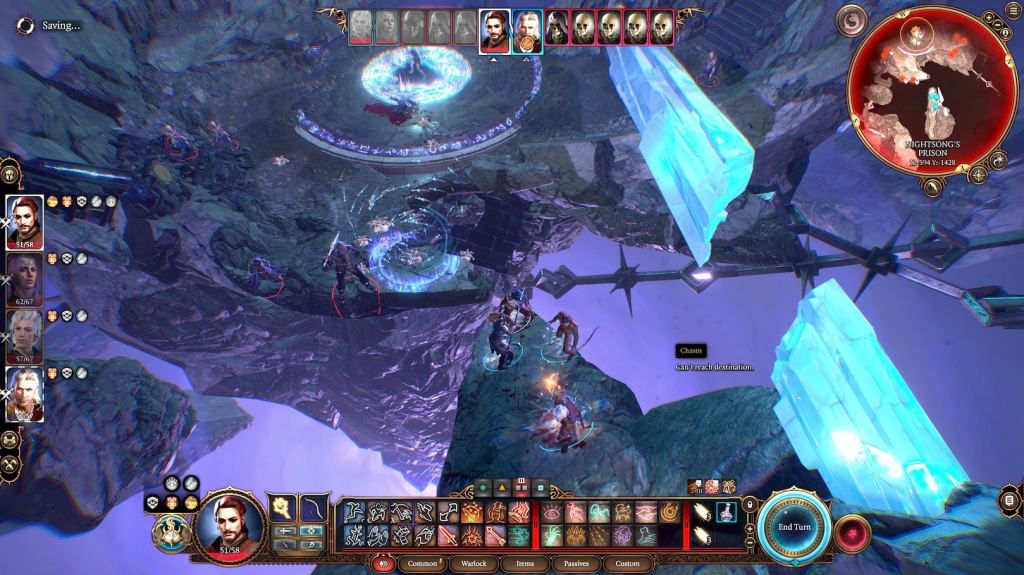
Tactical freedom
There’s a feeling you can get away with anything in Baldur’s Gate 3, with enough patience, strategy, or luck. You can complete whole questlines with a dice roll, put away tough opponents by the skin of your teeth, and stumble onto major quests (and quest solutions) simply by letting go, and leaving your fate to chance.
That’s how the game is best played, after all. Going with your instincts. Letting the dice roll determine your future. Living life out in the wilds, taking on hairy battles, and always leaning into risk. The game will expand around these desires, pushing you forward based on its formulas – reliant on both chance and choice.
Not only will this system guide your pathway, it will also change your crew, and how your relationships evolve. Early in the game, you have a chance to strengthen your relationship with Githyanki warrior, Lae’zel – but if you wait too long, her adjacent quest line will shift out of reach, as one part of the game is locked off. Meeting companion characters like Karlach, Wyll, Gale, and Shadowheart is similarly a matter of the right place, at the right time, with the right dice roll.
Deepening those relationships is much more complex – and requires a sense of patience as you untangle plot threads, learn more about each character’s secrets, and eventually help them along to their own personal goals. That’s the beauty of Baldur’s Gate 3. It strikes a great balance between chance and choice, allowing you to mould your adventuring, while providing a compelling framework to journey within.
Depending on who you manage to take with you on your travels, your journey will differ greatly. Shadowheart, for example, is the prickliest of the bunch, and her plot includes tough decisions that will ultimately shape or reshape your party at its conclusion.
Becoming close with Astarion will reveal an intimate past and hidden secrets, and lead you through Baldur’s Gate on a compelling, daring quest. Each personal journey requires dedication to uncover, as hidden threads reveal new layers, and allow your companions to thrive – both on the battlefield, and as friends.
Balance in solitude
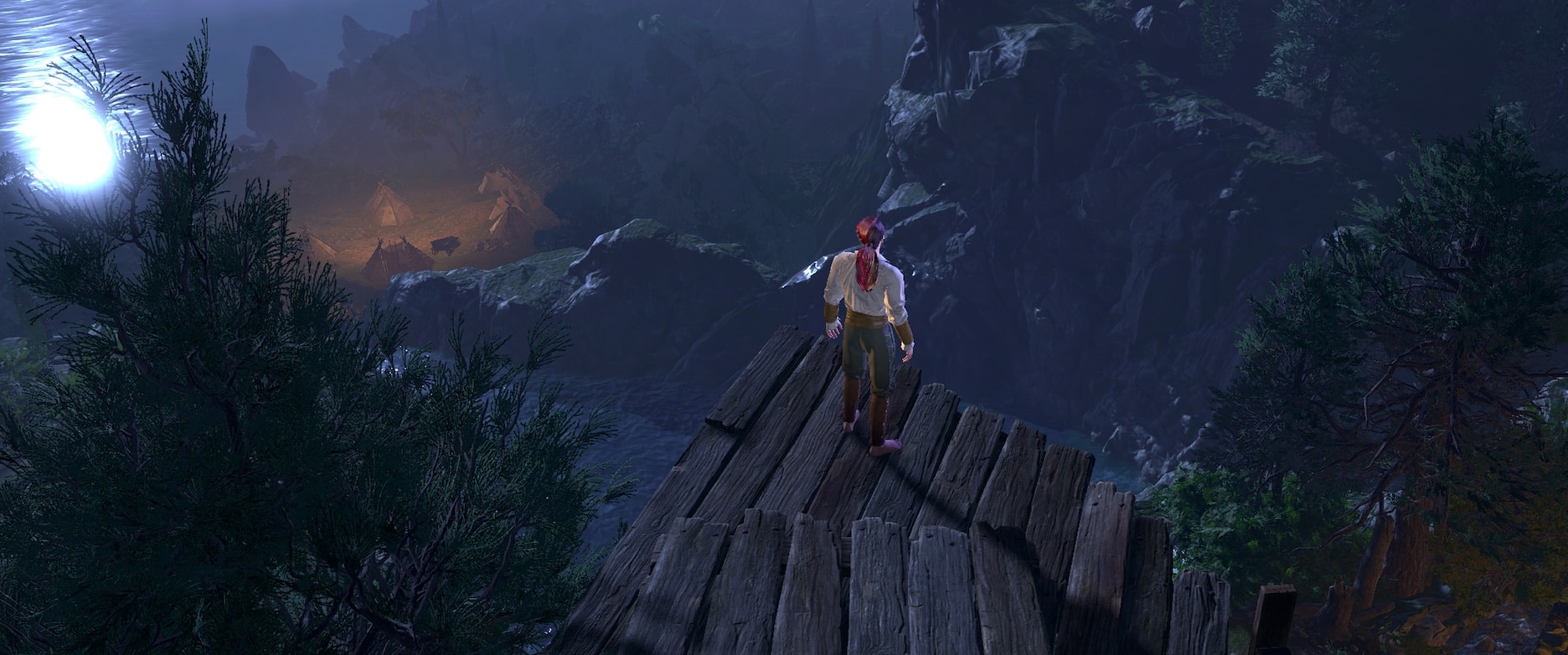
Each companion breathes life into the game, elevating plots and adding stakes to each twist. Relationships start off in a similar fashion – suspicion, prickliness – and evolve to become something warm and shared, as tension wears off and companions begin to open up. Their journey feels earned, with each personal quest line growing in tandem with the main plot. Moments become tender, and they provide a sense of balance to a main story that significantly ratchets up the tension with each act.
The road is harrowing as it goes on, but quieter moments allow you to understand more about why you’re on your journey, and what the consequences of inaction will bring. Your relationships then weigh on your choices, and feed into your sense of morals, your sense of adventure. How far you’re willing to travel, and how much of yourself you’re willing to give.
In creating that sense of personal connection, felt throughout every choice-based dialogue and combat interaction, Baldur’s Gate 3 expertly enthrals you with its ever-expanding plot. It winds a coil around your heart and tugs you along a string, emphasising your place in its world with every step. You aren’t just a bystander, romping through disparate quests. You are part of the fabric of its world, with every choice tugging at the seams, causing a ripple effect.
You and I are not playing the same version of Baldur’s Gate 3. You are not playing the same version as your friends.
It’s pure magic to bring up a quest line or character, and realise that you, and you alone, have stumbled onto their path by chance. It’s magic to realise just how far the game’s plot can stretch, and how it can account for even the smallest choices made along your path. In the same way Dungeons & Dragons allows you to live out a self-guided fantasy, Larian Studios has managed to capture and bottle a slice of that magic, in rare video game form.
Five Stars: ★★★★★
Baldur’s Gate 3
Platforms: PC
Developer: Larian Studios
Publisher: Larian Studios
Release Date: 4 August 2023
The PC version of Baldur’s Gate 3 was provided and played for the purposes of this review.
